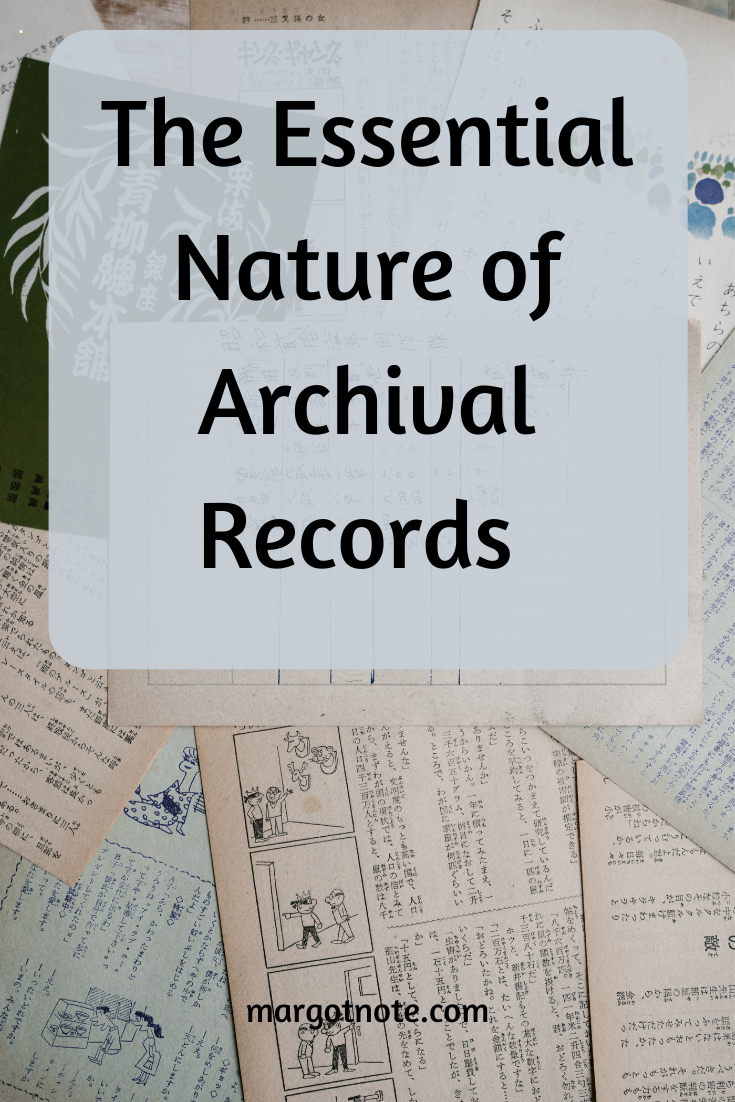The motives for creating records vary. They can be personal or come from others. Examples include correspondence and diaries. People create records for social reasons, produced by an array of organizations.
Individuals act together in groups, and those collective activities produce documents, such as membership rosters and meeting minutes. Financial issues result in records documenting acquiring, spending, and managing money. Legal reasons include the protection of a right, proof of ownership and service, and court records.
Records can also be instrumental, serving specific functions. For example, maps and blueprints are records designed to fulfill specific tasks. Records may also be symbolic, where the items take on artifactual or cultural values. For instance, universities issue diplomas to graduates, but diplomas are not how people prove they graduated from an institution. Understanding these motives helps archivists place records in context, which helps them conduct the archival functions of appraisal, arrangement, and description.
No matter how they were created, archivists work with unique records. Many archival records are one-of-a-kind, especially older documents. Archival collections also consist of documents that may be one of several copies of the same item, and many more copies and versions of electronic records. The aggregate—the accumulation of records that form a person’s papers or the organization’s records—itself is unique.
Contemporary Records
Contemporary records have certain characteristics. They are abundant, both in creation and duplication, and collective. Archivists tend to think in terms of accumulated items because of the way archival materials accumulate. Focusing on individual items is impractical; it is more cost-effective and useful to think of groupings. The theory and practice of appraisal, arrangement, description, and often preservation is geared towards groupings of materials and not individual items.
Records are decentralized. No longer do archivists collect only the papers and records of the elites. History demands a more democratic approach to archival acquisition and preservation. However, changes in recordkeeping practices and technology have altered how records are created and stored. The days of secretaries typing letters and central storage files are over. People create their documents and keep them on their computers.
Records are interrelated. The documents of public and private organizations, government, corporate, and not-for-profits are connected and interrelated. Archivists need to collaborate with their colleagues as an organization’s records are likely to be spread among repositories. The lines between published and unpublished information were blurred even before the Internet.
The decentralized and interrelated nature of records creation and communication have emphasized the role they play in communication among people—their social nature. Archivists should pay heed to how records represent social interaction and community building.
The shifting usefulness of records gets to the heart of what archives are. Records are created by individuals and organizations while doing day-to-day business. They are used for the function for which they were created during a period. At some point, they are no longer needed for that initial function, and archivists must decide if the records have long term value for other reasons. Archivists keep them because of those other values because their use has shifted from the records creators.
Saving Records
Materials can exist for a long time but are not entombed. The goal of archivists is to preserve materials so they will be used. Records come alive as they become part of someone’s research. The purpose of repositories is to ensure that important materials are identified, brought into archival custody, and managed to be used.
Archivists live on the horns of a dilemma: their work is a constant balancing act between preservation and access. Archival work consists of selecting, preserving, and making accessible the materials within their authority. If materials are used, they are at risk, but what purpose is there to have materials if they are unused? Therefore, archival records reveal their essential nature for knowledge and scholarship.
The blog was originally published on Lucidea's blog.































